Treaty Waitangi Commitments
Our Commitment to the Treaty of Waitangi
We desire to work with Māori in a way that is consistent with the Principles of the Treaty of Waitangi including partnership, protection, and participation, particularly:
- Acknowledges that New Zealand was founded based on bicultural partnerships.
- Aims to work together with Māori to ensure a true partnership exists, sharing skills and supporting one another.
- Will ensure Māori, Iwi, Hapū and whanau are aware of their rights to make applications to BayTrust including projects relating to the advancement of Te Reo Māori and Tikanga and are provided with the relevant advice and support.
Over past two years BayTrust has been working hard to ensure our commitment to Te Tiriti o Waitangi is embedded deeply into our values, purpose, kaupapa and funding framework.
- From a participation perspective 50% of our Trustees whakapapa Māori.
- We have increased our participation at a staff level through contracting Jacob Tapiata (Te Arawa, Ngāti Porou, Former Snr Māori Advisor Massey and Waikato university) who has greatly assisted with our thinking and approach in this area.
- Significant PD has been facilitated at a Trustee and staff level and we commit to continuing this as well as facilitating greater use of Te Reo, karakia etc
- The following Trust deed changes have been proposed to our accountable minister.
- Inclusion of term that BayTrust must have sufficient Trustees who whakapapa Māori;
- Inclusion of a term that Trustees should have regard to the principles of Te Tiriti o Waitangi in interpreting the Trust Deed and in performing their obligations under the Trust Deed.
From a cultural, protection and partnership perspective, as of 2020 we revisited our purpose and kaupapa, and consolidated our values and aligned and consolidated our funding framework. In particular we had recently added a new specific funding area for Māori; “Tū Māori Mai” which provided funding for:
- Activities or programmes that promote a strong Māori cultural identity (including Te Reo and tikanga) and contribute to a range of positive outcomes,
- Activities or programmes that help build knowledge of local Māori histories that help build understanding and positive collective futures,
- Contributions to capital projects on Marae (up to $15k).
As of 2022, we revisited the Tū Māori Mai funding area, consolidating data collected from observations from the funding area, applications, and our community. A decision was made to expand the Tū Māori Mai funding area (Tū Māori Mai area) but also to raise the funding area to its own priority area moving away from sitting with Community wellbeing. We have kept the original focuses of the area but added:
- Te Reo and Te Ao Māori flourish – Ko te Reo te mauri o te mana Māori;
- Mātauranga Māori and Kaitiakitanga are considered in all key decisions;
- Māori wellbeing and Te Ao Māori perspectives are put to the forefront;
- Support Māori housing aspirations are supported with the goal of intergenerational benefit;
- Enable Māori to have equal access to opportunities and Māori aspirations are supported;
- Contributions to capital projects on Marae (removing the cap 15k).
With the purpose of the funding area; Māori in Bay of Plenty are supported to achieve their aspirations and enabled to empower their whanau and wider community to create an abundant future for themselves, te taiao (natural world), and Te Ao Māori.
Legal implications and Te Tiriti
In 2021 The Community Trust asked for legal advice on their obligations and relationship to the Treaty of Waitangi. This was undertaken by Buddle Finlay (on behalf of all the Community Trusts) who used their ToW legal expertise to provide the attached advice and noted that:
Community Trusts are not part of the Crown and so are not a treaty partner, nor have the principles been extended to them by statute. Therefore, the principles of Te Tiriti are not directly binding or enforceable. However, Community Trusts have expressed a desire to recognise the significance of Te Tiriti in New Zealand society and their local communities by incorporating reference to it in their founding document – the Trust Deed.
As of March 2021, all of the Community Trusts including BayTrust, now have the following in their Trust Deed:
Te Tiriti o Waitangi: The Trustees should have regard to the principles of Te Tiriti o Waitangi in interpreting this Trust Deed and in performing their obligations under the Trust Deed.
Buddle Finlay noted that: "While the obligation to have regard to the principles of te Tiriti should not create legal obligations to honour te Tiriti in the way the Crown and certain state entities have obligations, in our opinion it requires the Community Trusts that adopt the wording to, in good faith, give genuine attention and thought as to how they can have regard to Te Tiriti and its principles in their work, including by working with Iwi, Hapū and Māori organisations appropriately."
A prominent local Māori artist Kelcy Taratoa (Ngai Te Rangi, Ngati Raukawa) co-designed our new funding framework and brand identity.
With our refocus of priorities and strategic direction we had also had a revamp of logo and design in collaboration with a local Māori artisit.
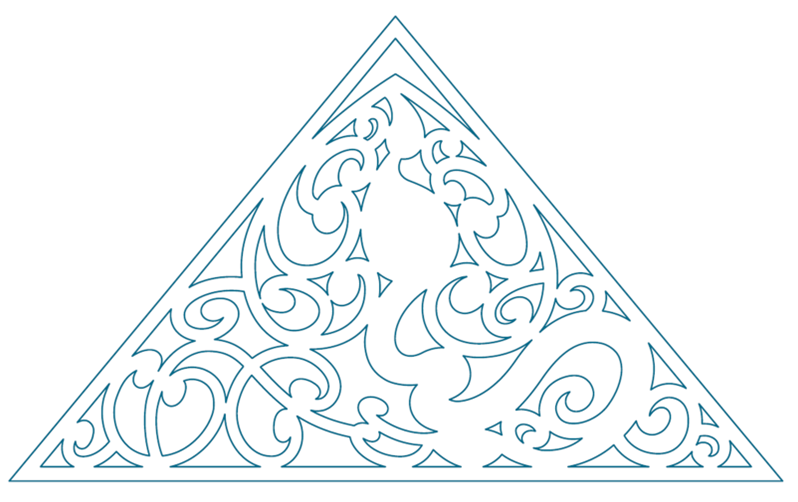
- The many mountains in the Bay of Plenty area are symbolised by the triangle shape.
- The river flowing through it connects all parts as one.
- The stingray is the guardian of the environment and its people, just as BayTrust is a guardian.
- The stingray’s heart is emphasised, reflecting a spirit of generousity. Also the central Taupō area is considered to be the heart of Te Ika-a-Maui (the North Island).
- The shape of the stingray’s tail symbolises sharks, representing thriving people, boldy engaging with their community.
Development of our new logo…
- Aonui—the triangle shape references Kete Aonui, one of the three baskets of knowledge, associated with benefiting the environment and all living things.
- Pūhoro koru—synonymous with movement, swiftness and agility and often seen on waka and as Tā moko on the thigh; and the division of the koro stem in the two communicates the notion of generosity and hospitality.
- Nihoniho—the zig zag pattern is a symbol of teeth, commonly found on Pātaka (Māori storage houses) and represents the importance of generosity and hospitality
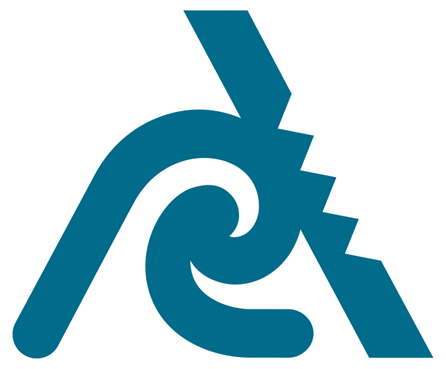
Old
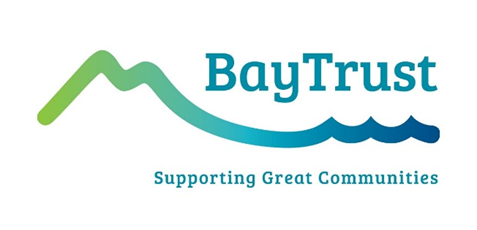
New
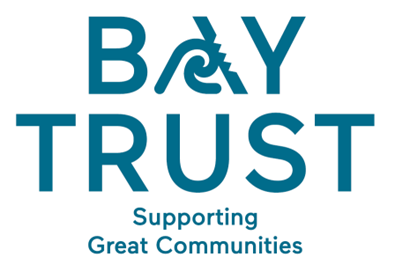
If you would like a logo pack for media or advertising (click here)
BayTrust Whakatauki
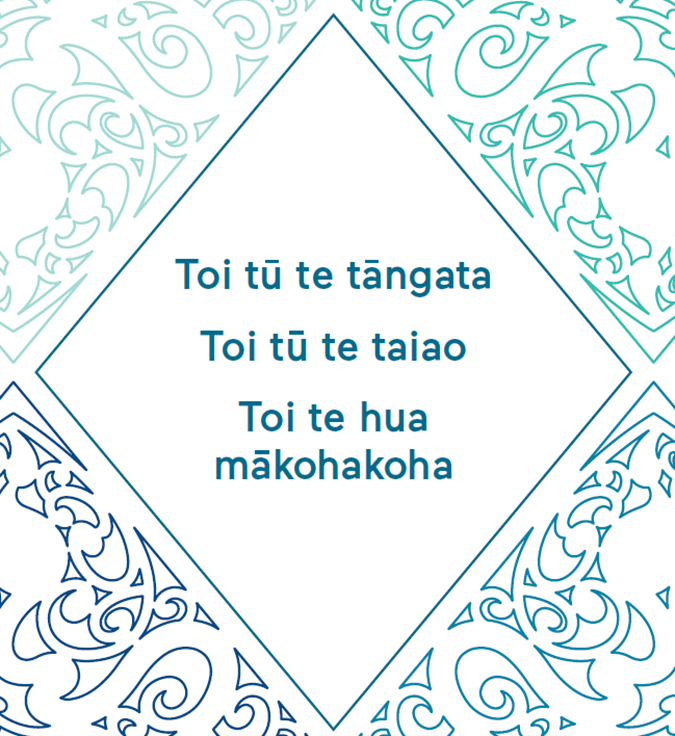
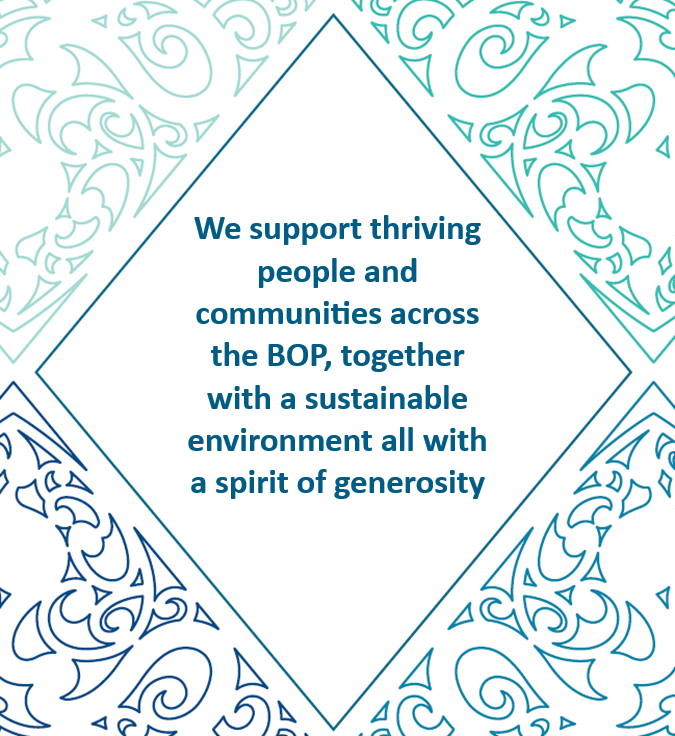
We had worked with our Māori Advisor to solidify our kaupapa and develop a whakatauki for BayTrust. (As above) This represents our commitment in supporting, our community, it's people, it's enviroment through the power of generosity.







